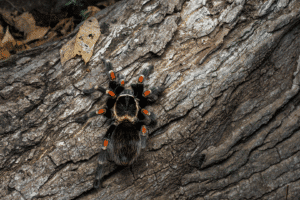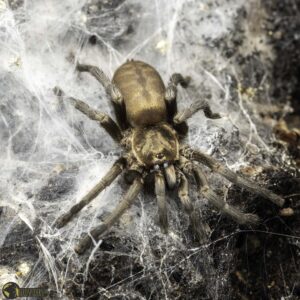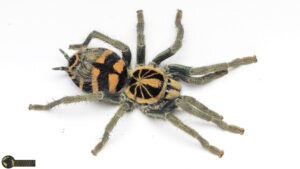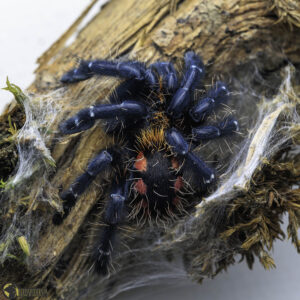Overview
The Theraphosinae are a fascinating subfamily of tarantulas, known for their striking appearance and impressive size. These tarantulas primarily inhabit the tropical forest floors of Ecuador and Colombia, making them one of the most remarkable arachnid groups in the Neotropical realm. Their vibrant colors and diverse genera make them popular among spider enthusiasts and nature lovers alike.
Natural History of Theraphosinae Tarantulas
Theraphosinae tarantulas thrive in tropical ecosystems, particularly in the lush rainforests of Ecuador and Colombia. They are ground-dwelling spiders that prefer humid environments with plenty of leaf litter and natural cover. These tarantulas play an important role in their ecosystem as both predators and prey, helping to maintain the balance of insect populations.
They are nocturnal hunters, feeding on insects and small invertebrates. Their large size and defensive behaviors, such as flicking urticating hairs, help protect them from predators. The tropical climate they inhabit typically ranges from about 20°C to 30°C (68°F to 86°F), with high humidity levels essential for their survival.
Taxonomy & Systematics of Theraphosinae
Theraphosinae is a subfamily within the family Theraphosidae, which belongs to the order Araneae (spiders) and the infraorder Mygalomorphae. This subfamily includes numerous genera, some of which are:
- Acanthoscurria
- Brachypelma
- Chromatopelma
- Grammostola
- Lasiodora
- Theraphosa
These genera showcase a wide variety of tarantula species, many of which are native to South America. The Theraphosinae subfamily is characterized by their robust bodies, often vibrant coloration, and the presence of urticating hairs used for defense. Their evolutionary adaptations have allowed them to thrive in diverse Neotropical habitats.
Husbandry of Theraphosinae Tarantulas
Keeping Theraphosinae tarantulas as pets requires attention to their natural habitat needs to ensure their health and longevity. Here are some key husbandry tips:
- Enclosure: Provide a spacious terrarium with a secure lid. A substrate depth of 7-10 cm (3-4 inches) of coconut fiber or peat moss is ideal for burrowing species.
- Temperature: Maintain a temperature range of 24-28°C (75-82°F) to mimic their tropical environment.
- Humidity: Keep humidity levels between 70-80% by misting the enclosure regularly and providing a shallow water dish.
- Diet: Feed them a diet of crickets, roaches, and other appropriately sized insects once or twice a week.
- Handling: While some species are docile, many Theraphosinae tarantulas can flick irritating hairs or bite if threatened, so handling should be minimal and cautious.
Proper husbandry not only supports the tarantula’s well-being but also helps in conservation efforts by reducing wild collection pressure.
References
- Pérez-Miles, F., Bonaldo, A. B., & Miglio, L. (2014). Bumba, a replacement name for Maraca Pérez-Miles, 2005 and Bumba lennoni, a new tarantula species from western Amazonia (Araneae, Theraphosidae, Theraphosinae). ZooKeys, 448, 1–8. doi:10.3897/zookeys.448.7920
- Bertani, R., Nagahama, R. H., & Fukushima, C. S. (2011). Revalidation of Pterinopelma Pocock 1901 with description of a new species and the female of Pterinopelma vitiosum (Keyserling 1891) (Araneae: Theraphosidae: Theraphosinae). Zootaxa, 2814, 1–18. PDF
- Pérez-Miles, F., & Weinmann, D. (2010). Agnostopelma: a new genus of tarantula without a scopula on leg IV (Araneae: Theraphosidae: Theraphosinae). Journal of Arachnology, 38(1), 104–112. doi:10.1636/A07-60.1






